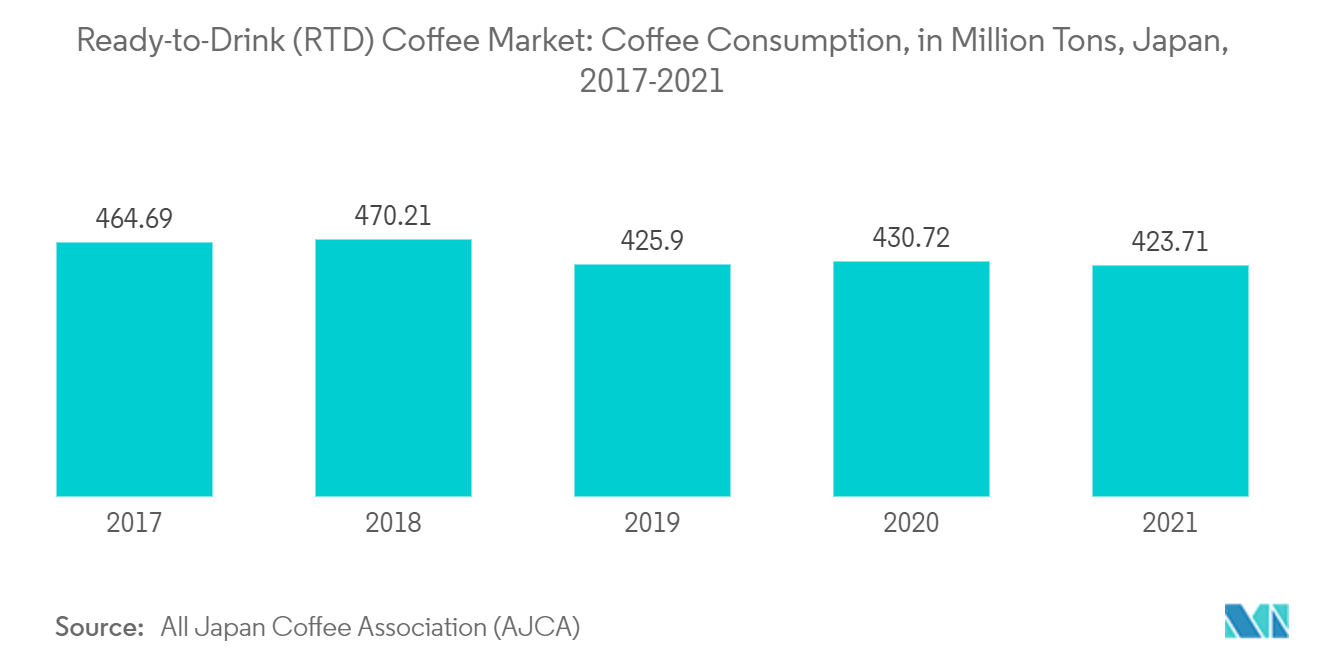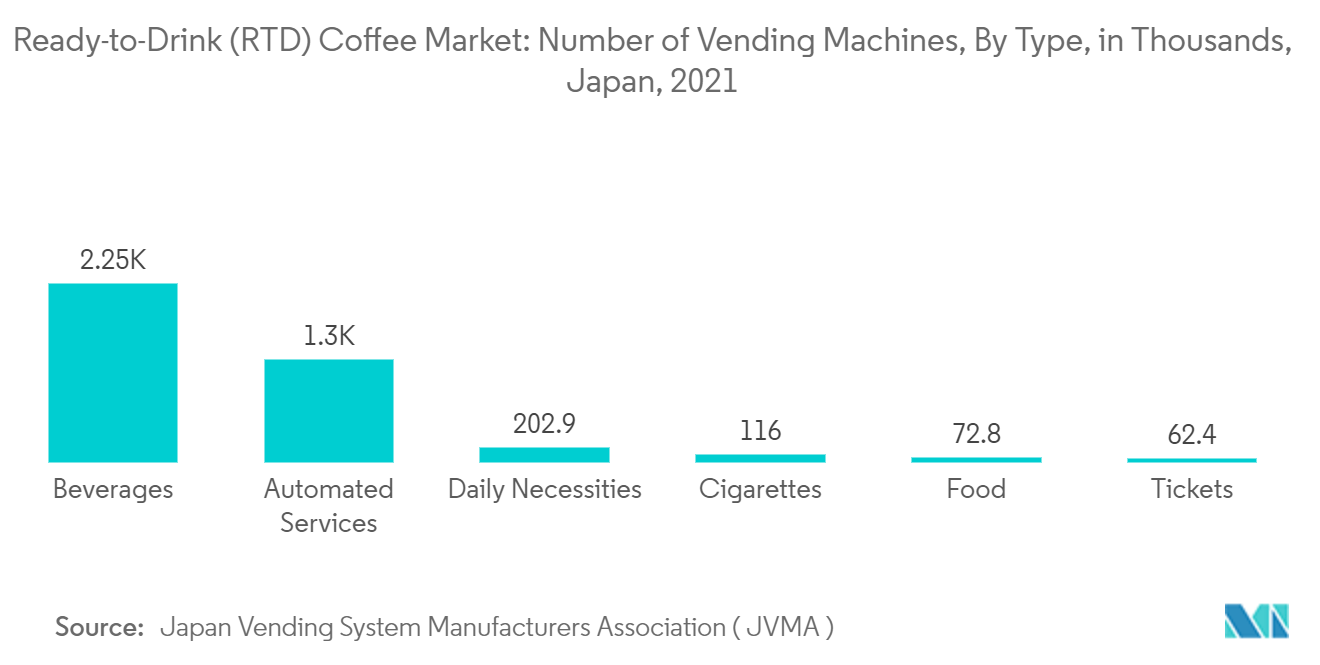Market Trends of Japan Ready-to-Drink (RTD) Coffee Industry
Increased Consumption of Coffee Based RTD Beverages
- The consumption habits of Japanese consumers, influenced by Western trends, have led to a surge in sales of on-the-go and ready-to-drink (RTD) beverages, including coffee. This trend is being driven by the aggressive promotion of RTD coffee and the ease of accessibility of canned beverages in Japan.
- Canned and RTD coffee beverages, such as milk-based and cold brew, are becoming increasingly popular among Japanese consumers due to their convenience and compatibility with their fast-paced lifestyles. In response, key players in the industry are introducing culturally relevant and unique flavored beverages tailored to Japanese interests and tastes. Canned coffee is now a popular way for Japanese consumers to kick-start their day, with hot and cold ready-to-drink coffee available in vending machines across the country.
- The shift towards busier schedules and less time for traditional grocery shopping has resulted in a growing demand for on-the-go RTD tea and coffee. According to the Japan Soft Drink Association and Kirin Holdings Company, the production volume of RTD coffee in Japan increased from 3.05 million kg in 2016 to 3.31 million kg in 2019. However, the COVID-19 pandemic led to a shortfall in production volume in 2020, which decreased to 3.04 million kg. Despite this setback, the popularity of RTD coffee in Japan is expected to continue to grow in the future.

Bottled RTD Coffee Gaining Momentum in the Country
- Japan is a country where both glass bottles and PET bottles are widely used, but PET bottles are preferred over traditional glass bottles due to technological advancements that have enabled them to serve multiple purposes beyond just holding beverages. These bottles aid in improving the shelf life and preservation of the products and are available in cost-effective formats.
- The availability of a variety of canned coffee beverages in vending machines and the increased number of manufacturers offering ready-to-drink coffee beverages in attractive packaging has boosted the sales of bottled RTD coffee. The on-the-go lifestyle and enhanced convenience have led consumers to opt for ready-to-drink coffee. Furthermore, the increased consumption of coffee among millennials and the adoption of convenient products like bottled, ready-to-drink coffee are supporting the growth of the market.
- PET-bottled coffee has gained popularity among the working population in Japan because it is portable, lightweight, and packaged stylishly. PET bottled coffee has expanded its consumer base in Japan as the unit price is comparatively lower than canned products. Bottled RTD coffee manufacturers offer a wide range of PET bottled coffee, intensifying competition among existing players and making it difficult to establish a distinctive positioning in the segment.
- For instance, the Asahi Group Holdings, Ltd. is leveraging the popularity of "foam coffee" in Japan by promoting its Wonderful Wonda coffee line, which enables consumers to create foam by shaking the bottle. This innovative product has gained popularity among coffee enthusiasts and is an example of how companies are trying to differentiate their products in the competitive bottled RTD coffee market in Japan. As such, it showcases the importance of product innovation and marketing strategies in the success of bottled RTD coffee in Japan.

